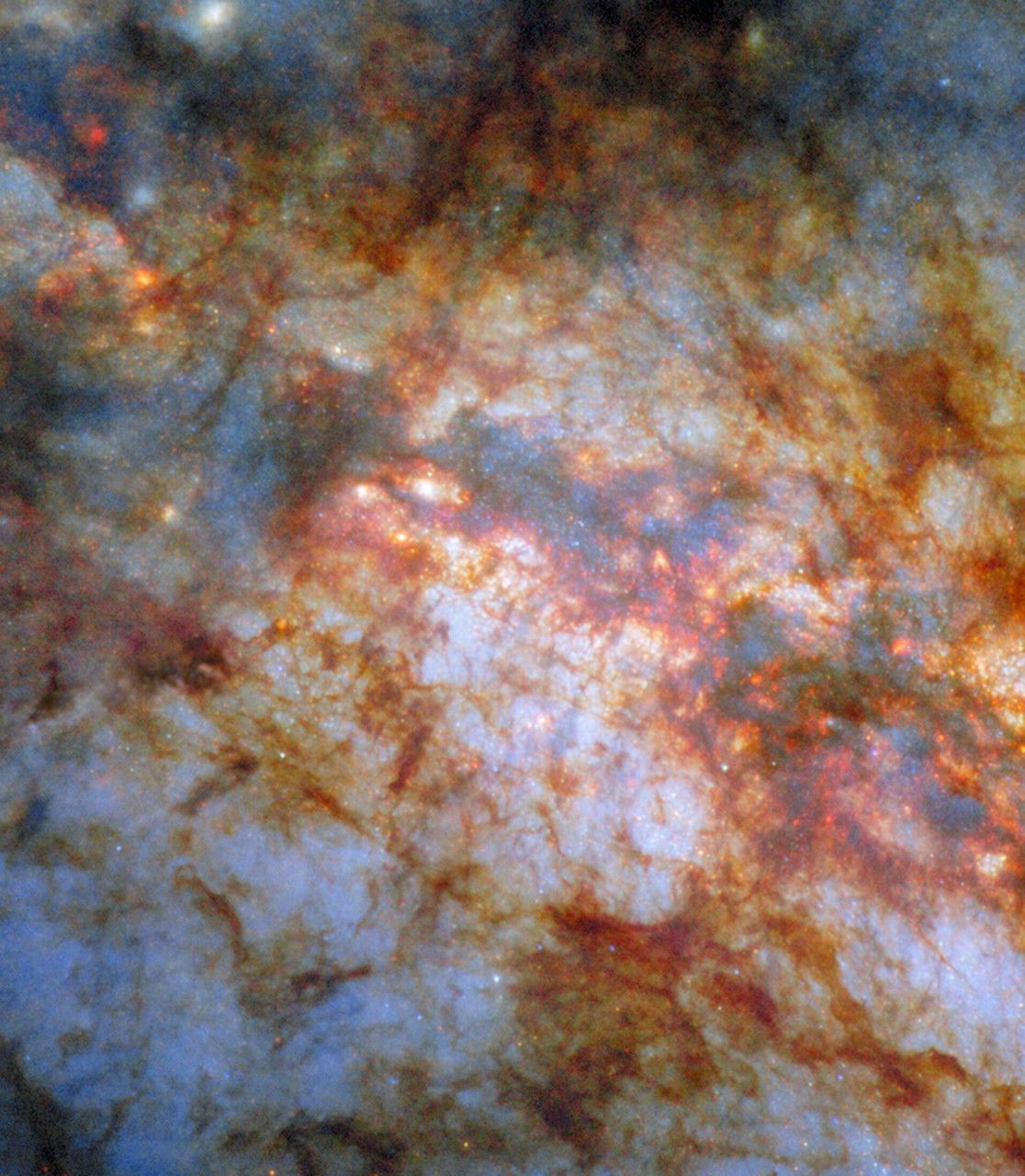Now Reading: Hubble Captures Smoldering Core of Celestial Cigar
-
01
Hubble Captures Smoldering Core of Celestial Cigar
Hubble Captures Smoldering Core of Celestial Cigar

Fast Summary
- Event: NASA/ESA Hubble Space Telescope released a new detailed image of Messier 82 (M82), also known as the Cigar Galaxy.
- Location: M82 is situated 12 million light-years away in the Ursa Major constellation.
- Important Features:
– M82 forms stars ten times faster than the Milky Way, classifying it as a “starburst galaxy.”
– The galaxy’s core contains super star clusters, hosting hundreds of thousands of stars, far more luminous than typical star clusters.
- Imaging Over Time:
– Diverse imaging data from Hubble (ultraviolet to near-infrared), Chandra X-ray Observatory, Spitzer Space Telescope, and James Webb Space Telescope were combined to better understand M82’s environment.
– The latest Hubble image integrates new high-resolution data for an enhanced view.
- Objective: exploring physical processes in the galaxy by combining data across various wavelengths for a complete understanding.
Indian opinion Analysis
The latest insights into Messier 82 highlight the caliber of international collaboration and technical advancements in space exploration. For India-a burgeoning space power-projects like these underline the importance of interdisciplinary research and cross-agency partnerships. Given ISRO’s growing capabilities demonstrated with missions like Aditya-L1 or Chandrayaan-3, India may learn from such multi-wavelength methodologies to enhance astronomical discoveries.Furthermore,understanding galaxies forming stars at unprecedented rates aids global astrophysical research while broadening humanity’s grasp of cosmic origins.This could indirectly bolster indian scientific aspirations through enhanced collaborations or inspiration for indigenous projects focusing on similar phenomena.





















